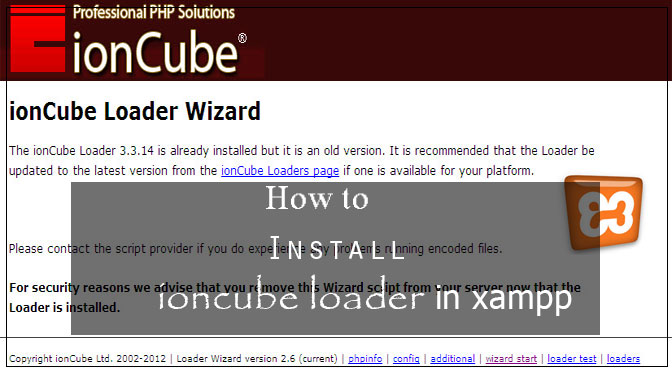As for the ionCube loader, this is free for anyone to download and install on their server. There are various different versions of ionCube loader available, each one designed for a specific system (Linux, Windows, macOS etc.), and 32-bit or 64-bit architectures. Once your php application is compiled with ioncube to bytecode, to run it you will have to install the ionCube Loader php extension. In this post, we will show you how to install the ionCube loader Let’s describe the step by step process for a 64bit Linux distribution (e.g. Ubuntu 18.04 LTS).
Ioncube Loader Php 7.1
Install PHP Ioncube Loaders in Debian Linux System. Ioncube is used as the encryption and decryption utility for PHP applications by which we can keep safe our data. It also can restrict PHP application to execute unauthorized. It also assists in speeding up the pages that are served. IonCube loaders are used for decoding encoded files while running on the webserver. read more details on official site. This tutorial will help you to install the PHP ionCube Loaders on Debian Linux system.
Prerequsities
- Running Debian server with shell access
- Pre installed Apache and PHP
Step 1 – Download ionCube Loader
First of all download the latest ioncube loaders php modules from ioncube from ioncube download page. Alternatively you can also use following command to download ioncube loaders.
Then, extract the downloaded archive under /usr/local directory.

Step 2 – Enable ionCube Loader in PHP
Now, find the active PHP version on your system. To find php.ini file you can use the following command.
The above command will show the configuration file for PHP CLI. You need to edit php.ini for CLI and well as Apache. You can find this with phpinfo(); php function.
By default the configuration file locations are:
Edit all the above configuration files and append the below code to the end of the files.
Replace /usr/local/ioncube/ioncube_loader_lin_7.3.so file with your matching PHP version file.
Step 3 – Restart Apache & PHP-FPM Service
After making changes in php.ini for Apache or PHP-FPM, you need to restart the following services.
Step 4 – Verify ionCube Loader
Como ativar o omnisphere 2. Let’s verify the installation and configuration of Ioncube PHP module. Run php -m command on shell.
Alternatively you can also put a info.php file on your web server document root with following content and check the status by access info.php in web browser.
2 | phpinfo(); |
Then access info.php in a web browser to view detailed information.